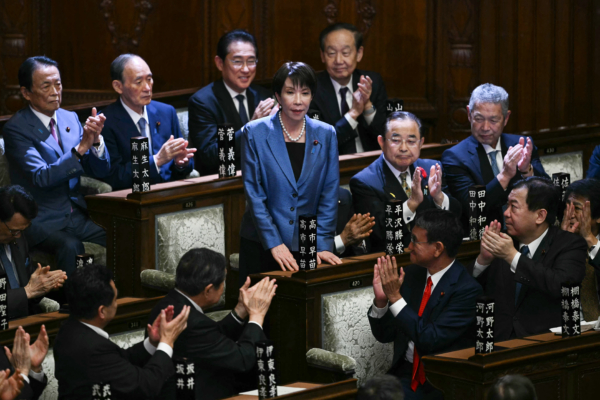The Japanese House of Representatives confirmed the victory of the Liberal Democratic Party President Sanae Takaichi in the Prime Minister nomination election. She has been elected as the 104th Prime Minister of Japan, becoming the first female prime minister in Japanese history.
In the election held on Tuesday, October 21st, Takaichi defeated the opposition candidates in the first round of voting, winning 237 out of 465 votes, crossing the majority threshold without needing to go to a runoff.
According to the Japanese Constitution, in the case of different voting results between the Lower and Upper Houses, the decision of the House of Representatives prevails. Therefore, the Upper House only carried out a formality vote in the afternoon, and Takaichi’s election was confirmed. Subsequently, the Prime Minister’s swearing-in ceremony and the Cabinet’s certification ceremony are set to be held, and Takaichi’s cabinet is expected to be officially established tonight.
Takaichi’s election comes after a significant reshuffle in Japanese politics. Following the split with the Komeito party, the Liberal Democratic Party has formed a new alliance with the Japan Innovation Party, which will support the new government through cooperation outside the cabinet.
In terms of forming the cabinet, Takaichi has swiftly finalized the list of key members. It is expected that Kozue Watanabe will become the Minister of Finance, becoming Japan’s first female Finance Minister. This is seen as an important step for Takaichi to fulfill her promise of “increasing female cabinet members and narrowing the gender gap in politics.”
Furthermore, Takaichi intends to appoint three of her opponents in the presidential election to the cabinet. Toshimitsu Motegi is expected to serve as the Minister of Foreign Affairs, Shinjiro Koizumi as the Minister of Defense, and Yoshimasa Hayashi as the Minister of General Affairs, demonstrating unity within the Liberal Democratic Party. Additionally, former Defense Minister Minoru Kihara may be appointed as the Chief Cabinet Secretary.
The alliance between the Liberal Democratic Party and the Japan Innovation Party holds 231 seats in the House of Representatives, slightly below the majority of 233 votes required. However, Takaichi won with 237 votes in the first round, indicating she has gained the support of non-alliance members.
According to Japanese media reports, the agreement reached between the Liberal Democratic Party and the Japan Innovation Party establishes the main policy directions for the coming years.
In terms of political reform, they aim to pass a bill reducing the number of parliamentary seats by 10% in the autumn session of the Diet.
In terms of economic measures, they are considering reducing the consumption tax rate on food and beverages to 0% within two years. For constitutional reform, they plan to establish a council to draft amendments to Article 9 of the Japanese Constitution and include provisions for emergency situations, with the goal of submitting a draft of emergency provisions to the Diet by the end of the year.
Prior to the nomination election, Takaichi expressed in an internal meeting of the Liberal Democratic Party: “Although the party did not secure a majority in both houses, our situation is severe. We keenly feel the responsibility as the largest party and must firmly push politics forward.”
“I sincerely appeal to everyone to unite and help one another. Let us turn the prevailing anxiety in society into hope.”
She also stated: “Last night, we reached an agreement with the Japan Innovation Party to establish a coalition government; I hope to move forward resolutely with extraordinary flexibility on matters beneficial to the country and its people.”
Takaichi Sanae is the fourth Prime Minister in Japan within five years following Yoshihide Suga, Fumio Kishida, and Shigeru Ishiba, highlighting the recent frequent changes in Japanese politics.
The official establishment of the Takaichi Cabinet and the Prime Minister’s press conference are expected to be held tonight, where she will further elaborate on the basic operating policies of the new government.

